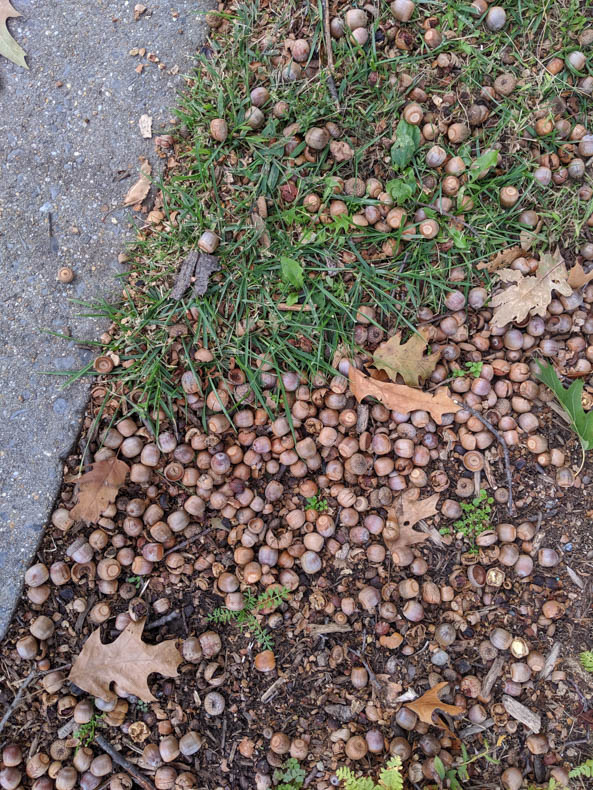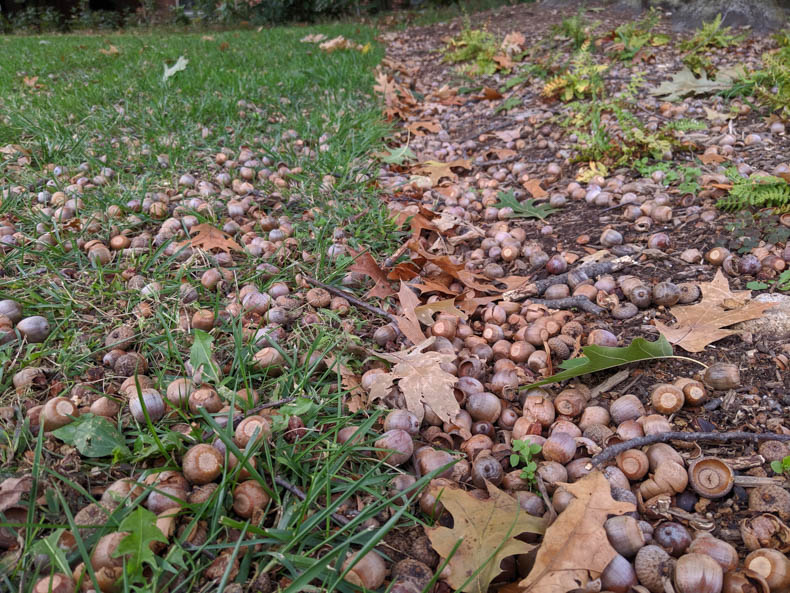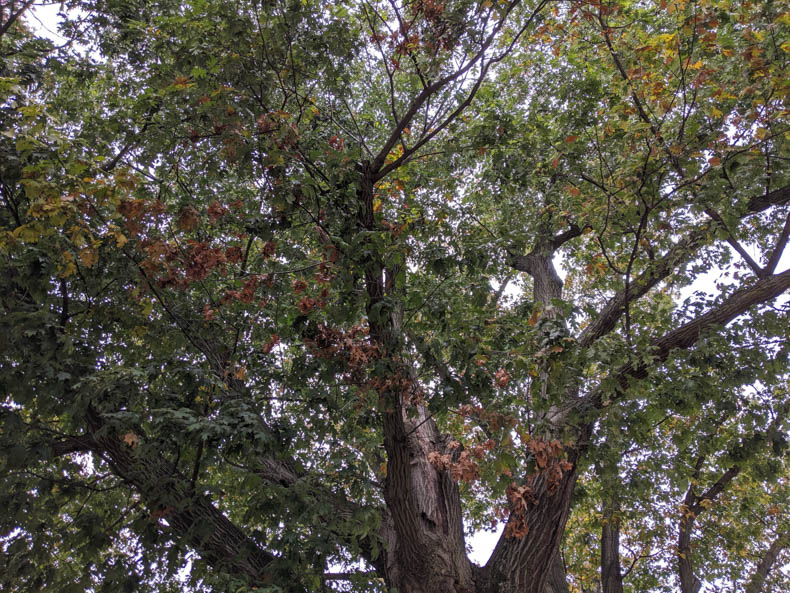
The campus of the National Institutes of Health is in Bethesda, Md. In the 1930s, the kernel of today’s NIH was part of “Tree Tops,” the estate of Mr. and Mrs. Luke I. Wilson. It has lots of lovely old brick buildings and squeezed-in bits of lawn. Lots of nice big trees, too.
One day in late October, I was on the NIH campus, spending the day at a meeting where my job was to sit at the end of the long table and take notes. (The life of a science writer is not always full of glamour.) At lunchtime, I guided several of the meeting’s attendees to the nearest cafeteria.
In front of NIH’s Building 1, I stopped for this: A carpet of acorns along the edge of the sidewalk. Oaks and some other tree species do something called “masting”–they make few or no seeds some years, and throw all of their babies on the ground at once in other years. This is thought to help them avoid predators; the squirrels that run around the NIH campus can eat a lot of acorns, but not this many acorns.

In the minute that I stopped to take pictures, I heard two more acorns fall off the tree and boing off of some metal surface nearby, the lid of a garbage can or something. I’m lucky one didn’t fall on me.
I don’t spend that much time hanging out under mighty oaks. Mostly I’m on urban sidewalks or in buildings. But I’d noticed little carpets of acorns a few times this fall, and was pleased to see one again when I had a moment to stop and appreciate.
I looked up and admired the tree that was doing the reproducing.

And then I continued on indoors. The meeting attendees were catching up to me, and I didn’t want to explain why I was so amused at these acorns. Most of them were biologists, though. They probably would have understood.
Photos: Helen Fields
I would think this technique would be less effective where there are deer and even pigs. Then again it only takes one or two to survive.
Very cool! One semester I took a class on population ecology during a mast year. We cut open millions and millions of acorns and counted the number damaged by weevils. Our professor was really jazzed about it. I remember being intrigued to learn that the massive food supply causes a spike in the white-footed deermouse population the following year, and they’re the main vector for Lyme disease – so make sure you check for ticks after playing in the woods next summer.